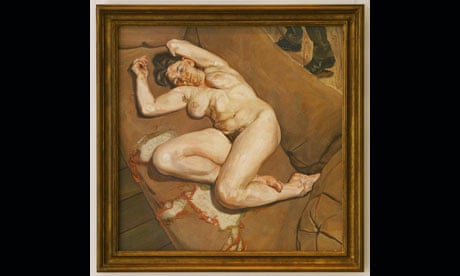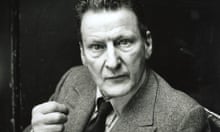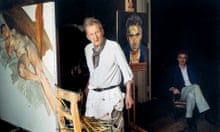Lucian Freud was a fundamentalist in his belief that thoughts of the artist should never be allowed to interfere with their art. They should appear "no more than God in nature", he once wrote. So it was probably as well that he seldom gave interviews, because there was certainly a lot to talk about. Freud was famously gregarious, and loved the good life, including expensive food and cars. (His regular table at the Wolseley was said to be set with a black cloth last night.) And "it is thought", in the cautious words of this BBC profile, that he fathered "dozens" of children.
The legends about his ramshackle (some would say disgusting) studio were also true – as you can see from the dirt and paint that cakes the walls in this extract from Tim Meara's film Small Gestures in Bare Rooms. For a fuller profile, the best film available online is Jake Auerbach's Portraits (2004), made up of interviews with his friends and family. Part one includes, among other things, the memory of his friend, the novelist Francis Wyndham, being taken to the River Cafe in Freud's glamorous car. "You know how frightening he can be as a driver," Wyndham says. In the second part, fellow artist David Hockney remembers sitting for Freud, and is full of praise for his work. "I think they're as good portraits as have been done by anybody, actually," he says. The third part is here.
Among critics, the London Review of Books art writer Peter Campbell made a superbly detailed study of Freud's technique, following his visit to Tate Britain's 2002 retrospective. There is also this film on YouTube, which is far from slick – indeed it's annoyingly shoddy – but it does give a good summary of Freud's influences and development.
The Today programme this morning carried a clutch of interviews, including with Sue Tilley, the subject of several of Freud's portraits. Most notable among them was Benefits Supervisor Sleeping, which became the most expensive painting by a living artist ever sold when it was bought for £17m in 2008, reportedly by Roman Abramovic at the instigation of his girlfriend, collector and millionairess Dasha Zhukova.
Tilley also spoke in more depth to BBC Breakfast this morning, revealing that the famously protracted process of sitting for Freud was not exaggerated – taking "three days a week for nine months" in her case. "You'd think he was a very serious person," she adds, "but his excitement when he met Kylie Minogue beggared belief."
Perhaps his closest literary counterpart, when it came to documenting the grotesque glory of the human body, was John Updike. And maybe it's a fitting way to say goodbye to one of the greatest British painters ever to read this short poem, in which the writer pays tribute to Freud's work.






